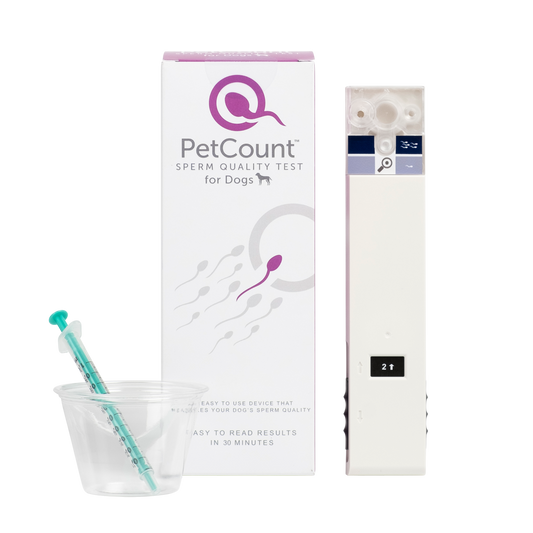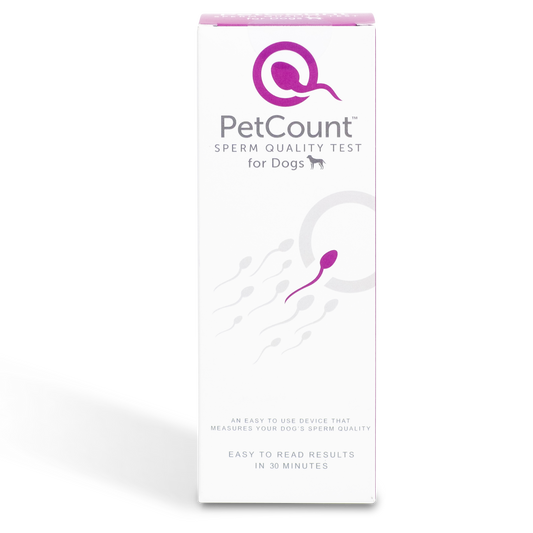
PetCount™ Sperm Quality Test
THE WORLD'S FIRST HOME TEST FOR DOGS USED BY VETS AND PRIVATE USERS THAT MEASURES DOG'S SPERM QUALITY
-
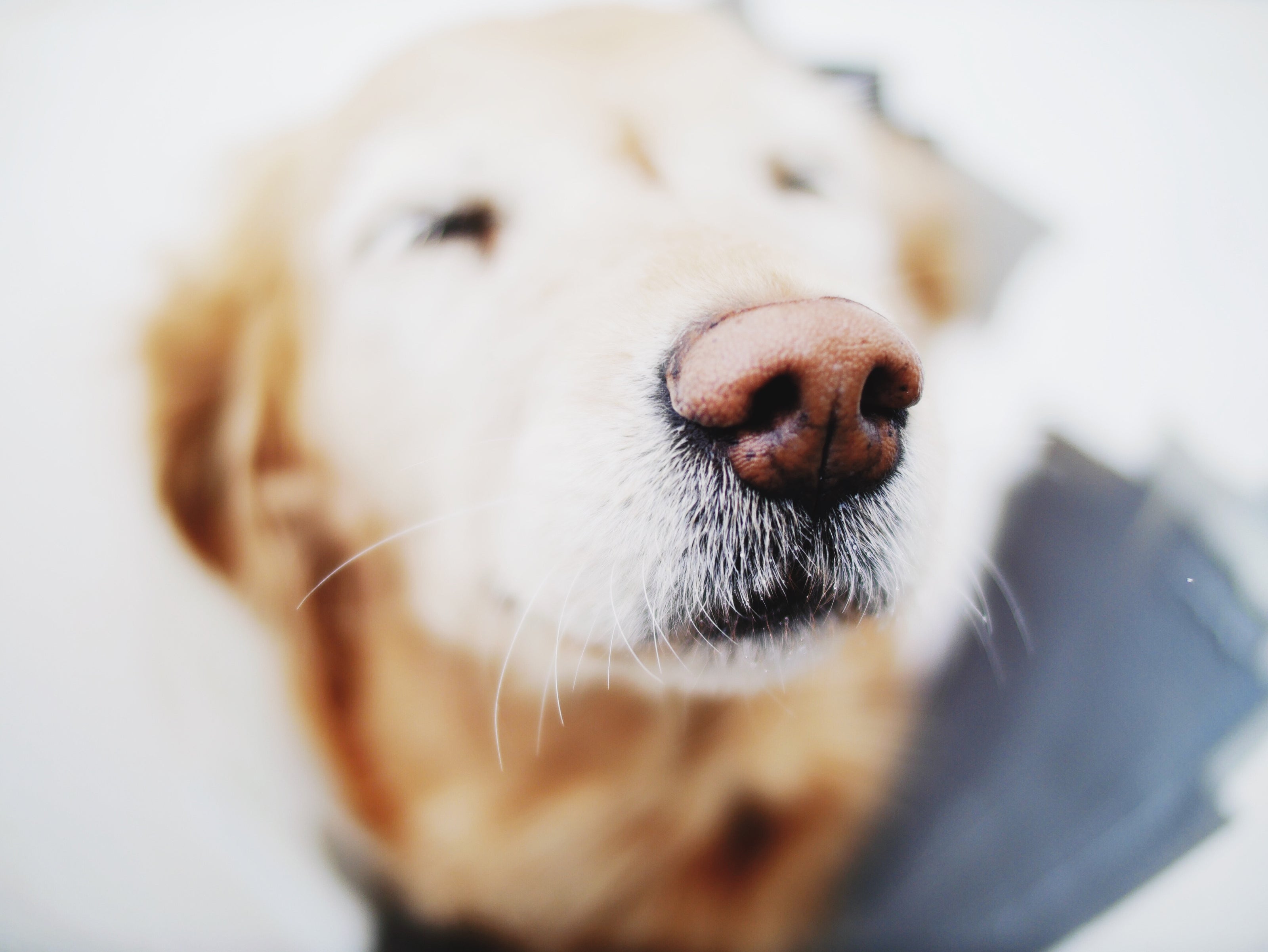
SPERM QUALITY
The most important factor in determining sperm quality of a dog is the sperm cells ability to swim in a straight line. These sperm cells are called Progressive Motile Sperm Cells (PMSCs).
-
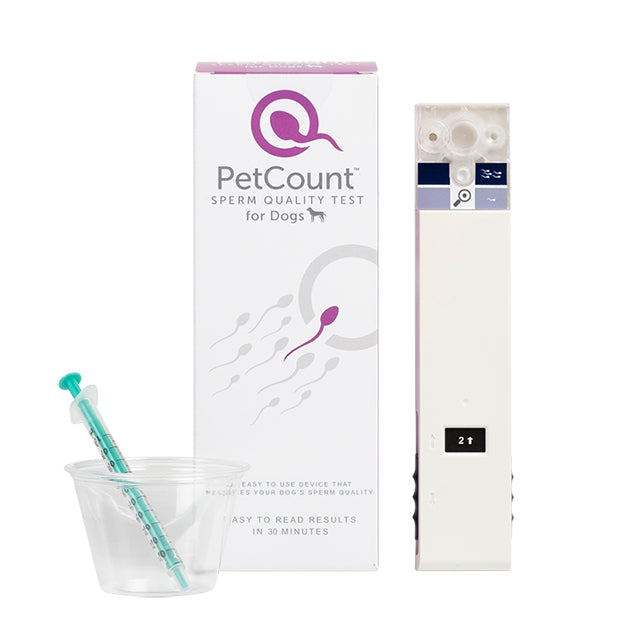
PETCOUNT™
PetCount™ is based on a patented technology that simulates the travel of sperm cells in order to determine how many of the cells in the sample are good swimmers, also called the Progressive Motile Sperm Cells (PMSCs).
-

ABOUT US
PetCount™ is developed by MotilityCount ApS, a Danish producer of the SwimCount™ Sperm Quality Test for men after undeniable requests from customers who had heard about the patented technology.
Products
-
PetCount™ Sperm Quality Test for Dogs
Regular price €69.99 EURRegular priceUnit price / per
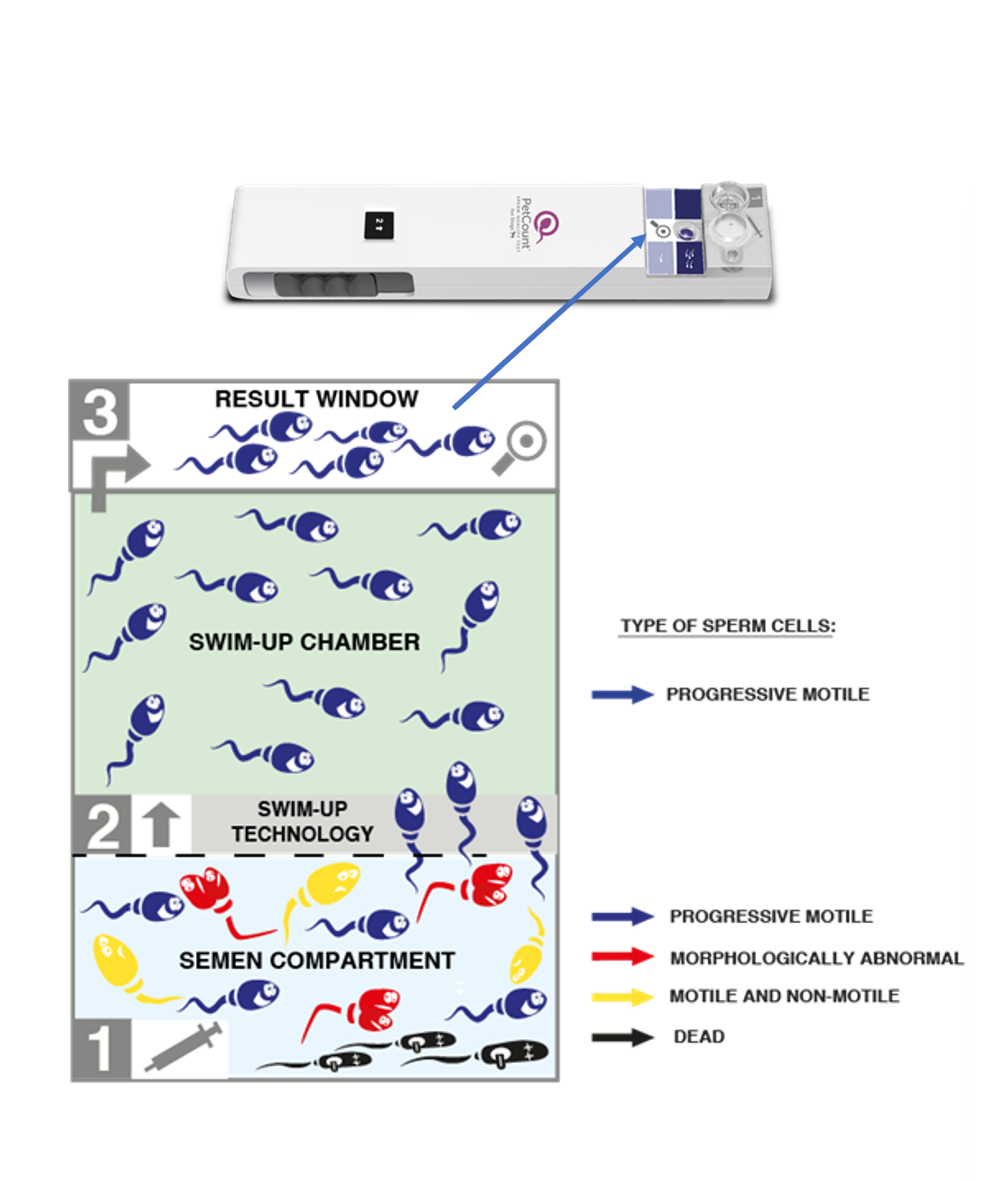
HOW DOES PETCOUNT™ WORK
The PetCount device makes it possible to separate all the good swimmers, the Progressive Motile Sperm Cells (PMSCs) from the rest of the sperm population which include dead sperm cells, morphological abnormal sperm cells and motile but not the PMSCs.
The color reaction (test result) is a direct result of the number of PMSCs in the semen sample - the darker the better and the more PMSCs.
Instructions video

SPERM QUALITY IN DOGS
The single most important factor in determining the sperm quality of a dog is the sperm cells ability to swim in a straight line, a term called Progressive Motility. The PetCount™ Sperm Quality Test for dogs measures the number of Progressive Motile Sperm Cells, PMSCs.
The semen factors thought to be most important to fertility are the motility, the number and the morphology of the spermatozoa. There is a direct relationship between sperm production by the testes and testicular size.
Therefore, larger dogs have a higher sperm count than smaller dogs. It has been reported that there is a relationship between sperm count and body weight. This may be true for animals in good body condition, but the relationship is lost in obese animals because testicular size does not increase. Even among breeds of similar size, there are variations in sperm counts.




